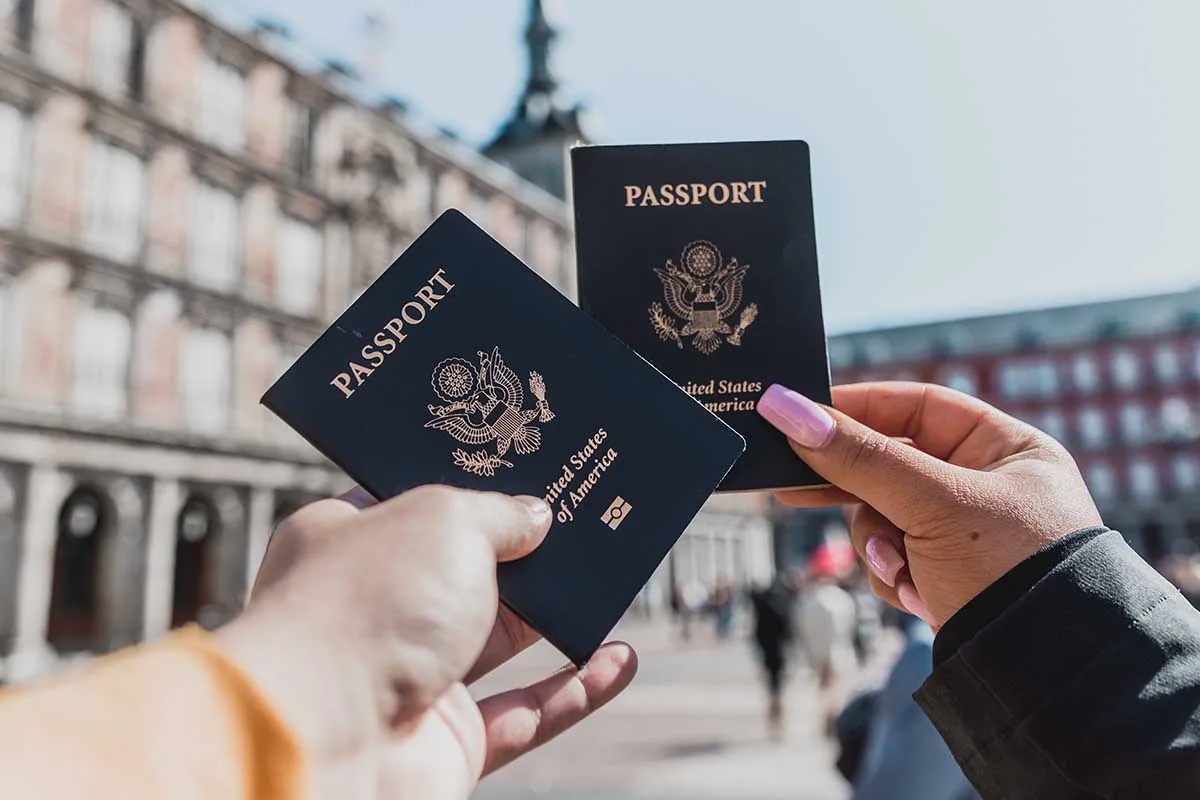Where do you need a visa to travel from US ?

it is important to understand the visa requirements before embarking on your journey. A visa is an official document issued by the country you are visiting, granting you permission to enter and stay for a specified period. In this article, we will explore the essential information regarding visa requirements for travelers departing from the USA.
Get Your Passport Today!
Why visas are necessary for international travel
Visas are necessary for international travel for several reasons. First and foremost, they allow countries to regulate the entry and exit of foreign nationals. By requiring visas, countries can exercise control over who enters their territory and for what purpose. This helps maintain national security and prevent illegal activities such as human trafficking or terrorism.
Moreover, visas also serve as a means for countries to manage their resources. By carefully screening visa applications, countries can ensure that travelers have sufficient funds to support themselves during their stay and prevent any strain on their social welfare systems.
Additionally, visas enable countries to track the movement of individuals, ensuring that they comply with the terms of their visas and do not overstay their permitted duration. This helps maintain the integrity of immigration systems and prevents unauthorized immigration.
Different types of visas and their purposes
There are various types of visas, each serving a different purpose depending on the nature of travel. Here are some of the most common types of visas:
- Tourist Visa: This type of visa is for travelers who plan to visit a foreign country for leisure, sightseeing, or visiting friends and family. It typically has a limited duration of stay and does not permit the holder to engage in any form of employment.
- Business Visa: A business visa is for individuals traveling for business-related purposes such as attending meetings, conferences, or exploring potential business opportunities. It may also allow the holder to engage in limited business activities.
- Student Visa: Students planning to pursue their education abroad require a student visa. This visa allows them to enroll in educational institutions and stay for the duration of their studies.
- Work Visa: If you plan to work in a foreign country, you will need a work visa. This type of visa is typically sponsored by an employer and allows the holder to engage in employment activities for a specified period.
Visa requirements for US citizens traveling abroad
As a US citizen, you enjoy the privilege of visa-free or visa-on-arrival travel to many countries. However, it is important to note that some countries still require US citizens to obtain a visa before their arrival. The visa requirements vary depending on the destination country and the purpose of your visit.
To find out the specific visa requirements for your destination, it is recommended to visit the official website of the embassy or consulate of the country you plan to visit. They will provide you with detailed information on the visa application process, required documents, and any fees involved.
It is important to apply for your visa well in advance of your planned departure date, as visa processing times can vary. It is also advisable to check the validity of your passport, as many countries require a minimum of six months validity from the date of entry.
The visa application process for US travelers
The visa application process for US travelers can vary depending on the country and the type of visa required. Here are some general steps to guide you through the process:
- Research: Start by researching the visa requirements of the country you plan to visit. Visit the official website of the embassy or consulate to gather information on the required documents, fees, and application procedures.
- Gather documents: Once you have a clear understanding of the requirements, gather all the necessary documents. This may include a valid passport, visa application form, passport-sized photographs, proof of travel itinerary, proof of accommodation, financial statements, and any additional documents specific to your visa category.
- Complete the application form: Fill out the visa application form accurately and truthfully. Pay attention to details and ensure that all information provided is correct.
- Submit your application: Submit your completed application form along with the supporting documents to the embassy or consulate of the country you plan to visit. Follow the instructions provided by the embassy regarding submission methods and any fees involved.
- Attend an interview (if required): Some countries may require applicants to attend an interview as part of the visa application process. If an interview is necessary, make sure to prepare by reviewing your application, understanding the purpose of your visit, and being ready to answer any questions related to your travel plans.
- Wait for the decision: After submitting your application, you will need to wait for the embassy or consulate to process your visa. The processing time can vary, so it is important to apply well in advance of your planned departure.
Common challenges and issues with visa applications
Visa applications can sometimes be complex and time-consuming, with several challenges and issues that applicants may encounter. Here are some common challenges and how to overcome them:
- Insufficient documentation: One of the most common reasons for visa application rejections is insufficient documentation. To avoid this, carefully review the requirements and gather all the necessary documents. Double-check that all documents are complete, up-to-date, and meet the specific requirements of the embassy or consulate.
- Lack of preparation for interviews: If an interview is part of the visa application process, it is crucial to be well-prepared. Research the purpose of your visit, familiarize yourself with the country's culture and customs, and be ready to answer questions related to your travel plans. Practice mock interviews to boost your confidence and ensure you present yourself in the best possible manner.
- Incomplete or inaccurate application forms: Many visa applications are rejected due to incomplete or inaccurate information provided on the application form. Take your time to fill out the form accurately, paying attention to every detail. Proofread your application before submitting it to avoid any errors or omissions.
- Insufficient funds: Some countries require proof of sufficient funds to support you during your stay. Make sure to provide financial statements or other supporting documents that demonstrate your ability to cover your expenses while abroad.
Tips for a smooth visa application experience
Here are some tips to ensure a smooth visa application experience:
- Start early: Begin the visa application process well in advance of your planned departure date. This will give you ample time to gather the required documents, complete the application form accurately, and address any issues that may arise.
- Research the requirements: Thoroughly research the visa requirements of the country you plan to visit. Visit the official website of the embassy or consulate for up-to-date information on the application process, required documents, and any specific instructions.
- Seek professional assistance if needed: If you find the visa application process overwhelming or are unsure about certain aspects, consider seeking professional assistance from a visa consultancy or immigration lawyer. They can guide you through the process, review your application, and provide valuable advice.
- Keep copies of all documents: Make copies of all the documents you submit with your visa application. This includes your passport, application form, supporting documents, and payment receipts. Having copies will be helpful in case any documents are misplaced or lost during the application process.
- Follow up on your application: After submitting your visa application, make a note of the expected processing time and contact the embassy or consulate if you have not received any communication within the specified period.
Visa-free travel destinations for US citizens
While some countries require US citizens to obtain a visa, there are several destinations that allow visa-free or visa-on-arrival entry. Here are some popular visa-free travel destinations for US citizens:
- Canada: US citizens can visit Canada for tourism or business purposes without a visa. However, a valid passport is required.
- Mexico: US citizens can travel to Mexico without a visa for tourism or business purposes for up to 180 days. A valid passport is required.
- United Kingdom: US citizens can visit the United Kingdom for up to six months without a visa. However, they must obtain prior authorization through the Electronic System for Travel Authorization (ESTA) before traveling.
- France: US citizens can stay in France for up to 90 days without a visa for tourism or business purposes.
- Australia: US citizens can visit Australia for up to 90 days without a visa for tourism or business purposes. However, they must obtain an Electronic Travel Authority (ETA) before traveling.
It is important to note that visa-free entry requirements may change, so it is always advisable to check the latest information on the official websites of the destination countries.
Visa requirements for foreign nationals visiting the USA
Just as US citizens need visas to visit certain countries, foreign nationals also need visas to enter the United States. The visa requirements for foreign nationals visiting the USA depend on the purpose of their visit and their country of citizenship.
There are two main types of visas for foreign nationals visiting the USA:
- Nonimmigrant Visa: This type of visa is for temporary visits to the United States, including tourism, business, study, or work purposes. The specific visa category depends on the purpose of the visit, such as B-1 for business visitors, B-2 for tourists, F-1 for students, or H-1B for temporary workers.
- Immigrant Visa: An immigrant visa is for individuals who plan to permanently reside in the United States. This includes categories such as family-sponsored visas, employment-based visas, and diversity visas.
To apply for a visa to enter the United States, foreign nationals need to complete the online visa application form, pay the application fee, and schedule an appointment for an interview at the US embassy. They will also need to provide supporting documents such as a valid passport, photographs, and proof of the purpose of their visit.
It is important to note that the visa application process for the United States can be quite rigorous and time-consuming. It is advisable to apply well in advance of your planned travel dates and ensure that you have all the required documents to support your application.
Conclusion: Importance of understanding visa requirements before traveling
Understanding visa requirements is essential for any traveler departing from the USA. By familiarizing yourself with the visa requirements of your destination country, you can ensure a smooth and hassle-free travel experience. Whether you are a US citizen planning to travel abroad or a foreign national visiting the USA, knowing the visa requirements and following the application process diligently is crucial.
Remember to start the visa application process early, gather all the necessary documents, and seek professional assistance if needed. Keep copies of all documents and follow up on your application to stay informed about its progress. By following these steps, you can navigate the visa requirements with confidence and enjoy your travel experience to the fullest.

